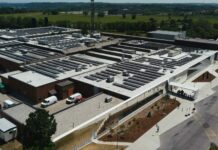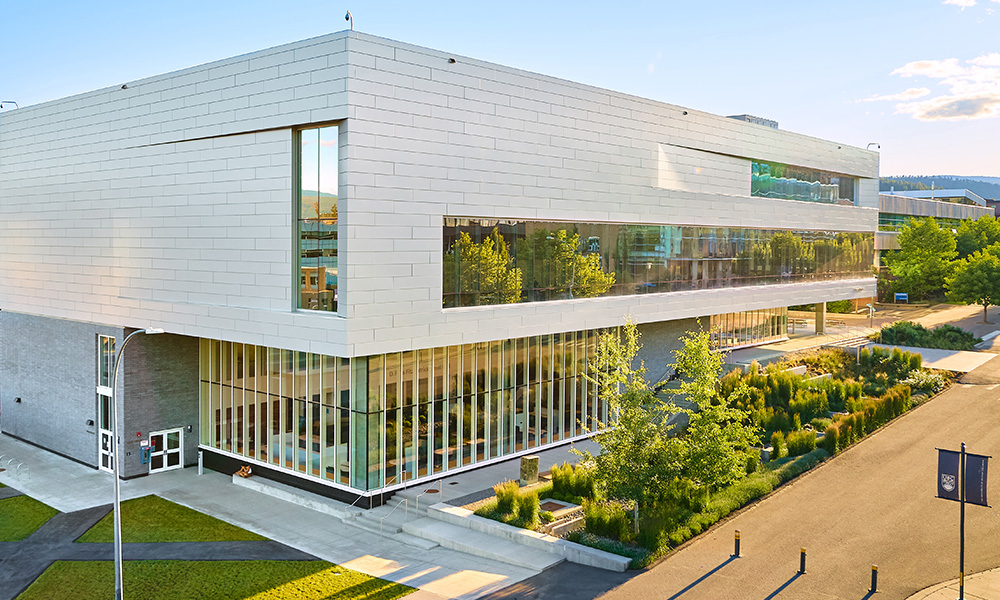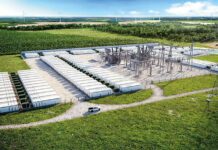Climate change and varying rainfall patterns are forcing municipalities in semi-arid regions such as the Okanagan to investigate more resilient ways to retain and use stormwater.
With this in mind, a team of UBC Okanagan researchers used the campus itself to examine and evaluate the lifecycle of low-impact developments (LIDs) that are intentionally created to help control and retain rainwater.
“The Okanagan is a great case study that can help us better understand what developers and governments need to consider when building much-needed new housing without adversely impacting our environment,” said lead author Dr. Sadia Ishaq, who recently completed her doctoral degree at UBC Okanagan’s School of Engineering.
Increasing populations and development trends are modifying urban land landscapes while producing large amounts of rainwater runoff, rendering curbs and gutters obsolete for overflow transport. The major limitations of conventional systems are related to a reduction in baseflow and groundwater recharge, which results in valuable resources being drained into streams or rivers.
Examples of LIDs include retention ponds, porous pavement, rain gardens, green roofs and bioswales—intentionally created vegetative areas that retain rainwater—to help reduce flood risks and collect runoff.
Using a lifecycle management analysis of LIDs at UBC’s Okanagan campus, Dr. Ishaq, along with Dr. Anber Rana, considered the resources and energy required throughout the lifecycle of the LIDS, as well as the release of waste and pollutants into the environment.
The aim was to evaluate the environmental impacts of LIDs installed at UBC Okanagan over an assumed service life of 30 years; construction costs and materials were also considered.
The university’s goal for sustainable runoff management is to capture 90 per cent of the annual rainfall and divert 100 per cent of it from the municipal sewage system through capture, reuse, infiltration and storage. Existing campus LIDs include the development of depressed rain gardens, bioswales, box planters and wetlands. These LIDs are intended for an area of 389 hectares and operate by gravity flow of runoff via the drainage system without pumps.
“Rainwater is considered a valuable resource at UBC Okanagan, and the campus has a series of on-site runoff retention and infiltration infrastructure, which aims to support zero-net impact targets on the environment,” said Dr. Rana, study co-author and a postdoctoral fellow.
The findings determined that box planters and naturally occurring wetlands provide significant environmental and financial benefits beyond simple stormwater management, with box planters offering the lowest impacts.
“LIDs can reduce greenhouse gas emissions and lower energy costs,” added Dr. Ishaq. “Conservation of natural features with water holding capacity is highly recommended to reap ecosystem sustainability as well as cost savings.”
The researchers are now turning their attention to other circular economy principles when comparing other green infrastructure to gauge their potential compared to traditional methods.
A substantial investment by the federal government into green infrastructure, as part of the Nature Smart Climate Solutions Fund, suggests the government also sees the benefits of green infrastructure.
This study was carried out under the guidance of Drs. Rehan Sadiq and Kasun Hewage at UBCO’s Life Cycle Management Laboratory. This research was published recently in the Journal of Cleaner Production and was supported by the Natural Sciences and Engineering Research Council of Canada.
Featured image: UBC Okanagan uses several low-impact developments, like this vegetative area outside the Commons building, that are intentionally created to help control and retain rainwater. (Geoff Lister/UBC Okanagan)















